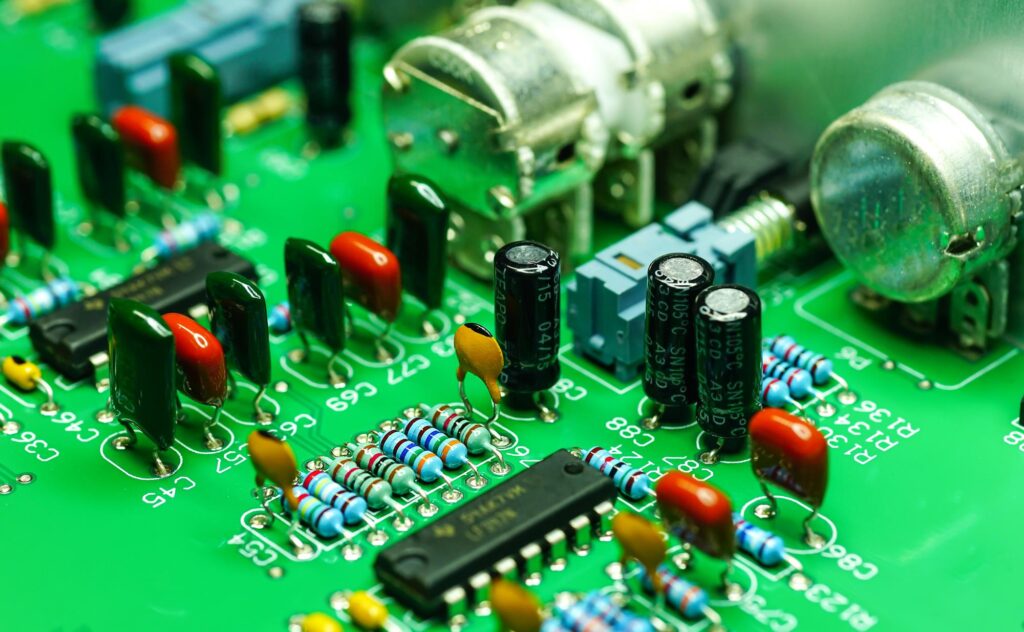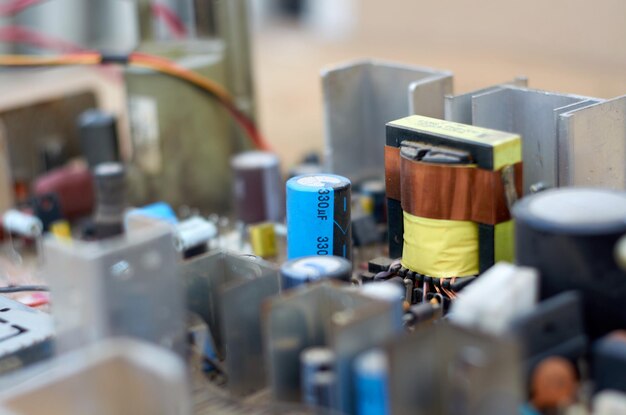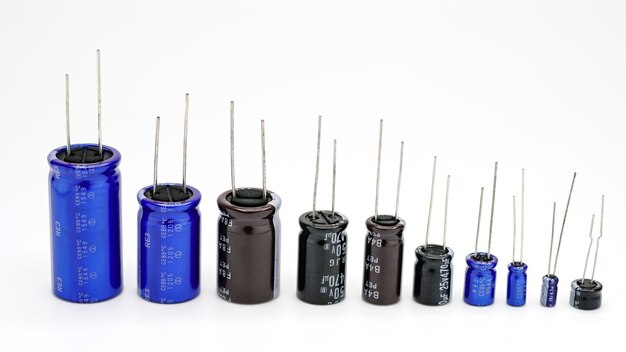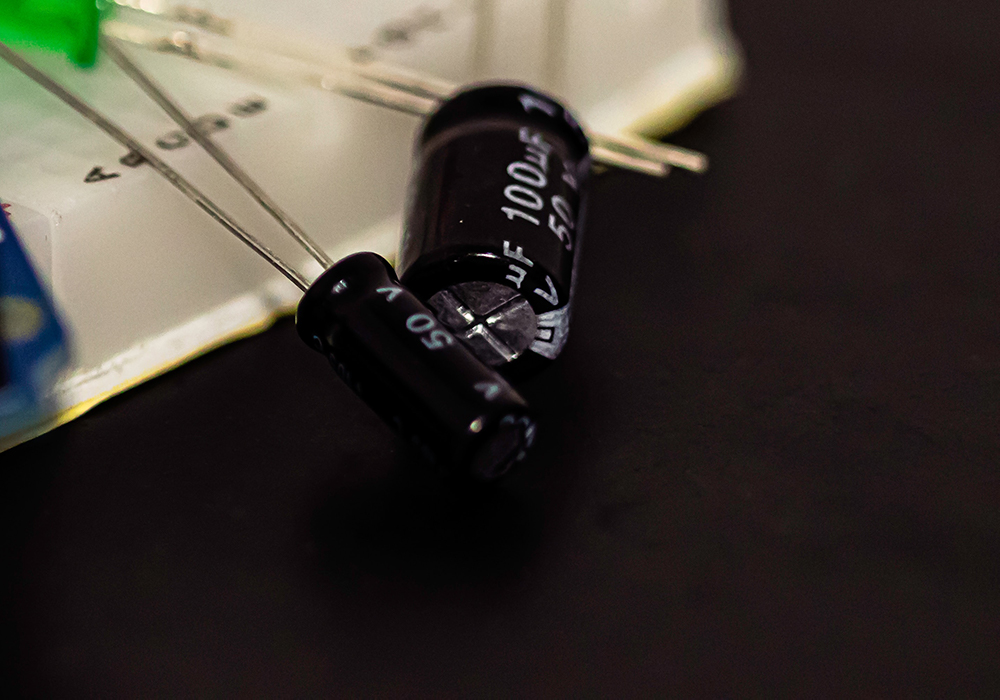Capacitors Understanding the Basics

In the realm of electronics, a device known as a capacitor has the incredible ability to preserve and retain electrical energy for future use. Within the sphere of electronics, capacitors are classified as passive components, typically comprised of two metallic plates positioned parallel to each other, and partitioned by an insulating medium – commonly referred to as a dielectric – which acts as a barrier to electrical current flow. Capacitors come in different sizes and shapes, and they are used in a wide range of electronic devices. In this article, we will explore the basics of capacitors, including their function, types, applications, and how to calculate their values.
Understanding the Function of Capacitors

Capacitors play a pivotal role in the world of electronics by functioning as an energy reservoir of sorts. When an electrical charge is introduced to the plates of a capacitor via voltage application, a build-up of charge occurs on these plates, enabling the capacitor to store electrical energy for later use. The amount of charge that a capacitor can store depends on its capacitance, which is measured in farads (F). Capacitance is determined by the surface area of the plates, the distance between them, and the dielectric material.
Capacitors can also be used to filter or block certain frequencies in electronic circuits. When used in a filter, a capacitor allows low-frequency signals to pass through while blocking high-frequency signals. Capacitors can also be used in timing circuits, oscillators, and power supplies.
Table of Contents
Types of Capacitors

Capacitors, as an essential component of electronic circuits, come in various shapes and sizes, each with its own set of unique features and applications. Some of the most commonly used types of Capacit..s include ceramic capacit..s, electrolytic capacit..s, tantalum capacit..s, film capacit..s, and super capacit..s, among others. These versatile components find their way into a plethora of electronic devices, from simple timing circuits to complex computer processors, and have revolutionized the way we live and interact with technology today.
Ceramic Capacitors
When it comes to capacit..s, one variety reigns supreme as the most prevalent: ceramic capacit..s. These little dynamos are found in a wide array of electronic devices, from cellphones to spacecraft, and are cherished for their exceptional performance and reliability. They are made of ceramic material and have a high dielectric constant, which makes them suitable for high-frequency applications. They are small, inexpensive, and can withstand high temperatures.
Electrolytic Capacitors
Electrolytic capacit..s are polarized capacit..s that have a higher capacitance than ceramic capacit..s. They are commonly used in power supply circuits, where they are used to smooth out voltage fluctuations. They have a limited lifespan and should be replaced periodically.
Tantalum Capacitors
Tantalum capacit..s are similar to electrolytic capacit..s but have a longer lifespan. They are commonly used in audio and video circuits, where they provide high-quality filtering.
Film Capacitors
Film capacit..s are made of a thin plastic film and have a high dielectric constant. They are used in high-voltage and high-temperature applications.
Applications of Capacitors
Capacit..s have numerous applications in electronic devices, including:
Power Supply Circuits
Capacit..s are used in power supply circuits to filter out noise and voltage fluctuations. They smooth out the output voltage and provide a stable source of power.
Audio and Video Circuits
Capacit..s are used in audio and video circuits to filter out unwanted frequencies and provide high-quality sound and picture.
Timing Circuits
One of the many applications of capacit..s in the field of electronics is within timing circuits, where they serve as critical components that regulate the frequency and duration of electronic signals. With their remarkable ability to store and discharge electrical energy, capacit..s provide precise control over timing functions that are fundamental to a wide range of electronic devices and systems. They are commonly used in oscillators and timers.
Motor Starters
Capacit..s are used in motor starters to provide an initial surge of power to start the motor.
Calculating Capacitance
The degree of capacitance exhibited by a capacit.. is subject to various factors, including but not limited to the extent of the surface area of the plates, the separation distance between them, and the characteristics of the dielectric material employed in its design. The formula for calculating capacitance is
C = εA/d
Where C is capacitance, ε is the dielectric constant, A is the surface area of the plates, and d is the distance between the plates.
Conclusion
Capacit..s are essential components in electronic devices. They store electrical energy, filter out unwanted frequencies, and provide a stable source of power. There are several types of capacit..s, including ceramic, electrolytic, tantalum, and film capacit..s, each with its own advantages and disadvantages. Understanding the basics of capacit..s, including their function, types, and applications, is crucial for anyone interested in electronics.
FAQs
What is a capaci..r used for?
In the realm of electronics, capacit..s are celebrated for their unique ability to accumulate and retain electrical energy, a property that makes them indispensable in a variety of applications, ranging from power supply filtering to audio signal coupling.
May You Like : Electronics The Ultimate Guide for Beginners


2 thoughts on “Capacitors Understanding the Basics”